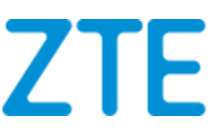ZTE Corporation, an international provider of telecommunications, enterprise and consumer technology solutions for the Mobile Internet, has released a white paper on its 5G Summit & User Congress on Green 5G, “5G Energy Efficiencies, Green is the New Black”, authored by GSMA Intelligence, a provider in global telecoms, media and technology (TMT) research and part of the broader GSMA.
The white paper analyses the background and principles of building and improving energy efficiency of communications networks in the 5G era from aspects of cost reduction, network performance optimisation, energy security, and contribution to global carbon emission reduction. It also summarises the feasibility of energy saving and consumption reduction through innovation from aspects of radio access network and wider network planning.
According to the white paper, to fundamentally reduce the energy consumption of radio access base stations, each part of the 5G network must be treated individually. Effective tools include applying more efficient battery solutions, lowering energy consumption of equipment, implementing more intelligent AI-driven sleep states, and more targeted network deployment planning. These measures can achieve end-to-end energy saving and consumption reduction of radio access base stations, and build a green communication network for the benefit of people.
To help the fight on global climate change goals and reduce mobile network operational costs, energy saving has become a major priority and mission of the telecommunications industry. While mobile networks bring near ubiquitous access, convenience and entertainment to the public, as more people use their smartphones for video and other bandwidth hungry services over LTE and 5G, power and energy consumption will rise in the absence of interventions.
Wireless access network consumes the largest proportion of energy among the mobile network, and it is regarded as the main factor of energy consumption. As per the white paper data traffic is expected to grow three folds on a per user basis between now and 2025. The deployment and expansion of LTE and 5G networks will inevitably bring greater pressure to network energy consumption.
“Energy is a very large portion of the cost base for the operators, ranging from 20% to 40% of Opex across the industry,” said Tim Hatt, head of Research at GSMA Intelligence. “Things are moving quickly with energy efficient network technologies and a rebalancing of fuel sources towards renewables as more telcos set ambitious glidepaths towards carbon neutral and, eventually, net zero emissions. Energy and climate efforts are now very much front and centre objectives as part of doing business and not mere CSR.”
In recent years, ZTE has submitted over 500 green 5G innovation patent applications. By means of the high-performance chipsets developed by ZTE, structural design and intelligent network operation tools, ZTE has been continuously lowering the power consumption of wireless base station equipment.
Based on energy saving functions and AI-based traffic load prediction, ZTE’s 4G and 5G network energy saving solution, PowerPilot, is the industry’s to introduce AI-powered service-awareness energy saving. By identifying service types and their energy efficiency differences, PowerPilot can evaluate service requirements in real time and support the service with networks of higher energy efficiency to maximise energy efficiency in the entire network.
According to typical network configuration calculations, the energy saved by the PowerPilot solution is twice as much as that of the conventional AI-based energy saving solutions, and it can save up to 20% of energy in a multi-mode network, thereby effectively reducing the operational expenditure. To date, ZTE’s PowerPilot energy-saving solution has been deployed on more than 600,000 sites with over 20 networks worldwide, saving operators more than $1 billion (€0.84 billion) in electricity expenses.
Comment on this article below or via Twitter: @VanillaPlus OR @jcvplus






